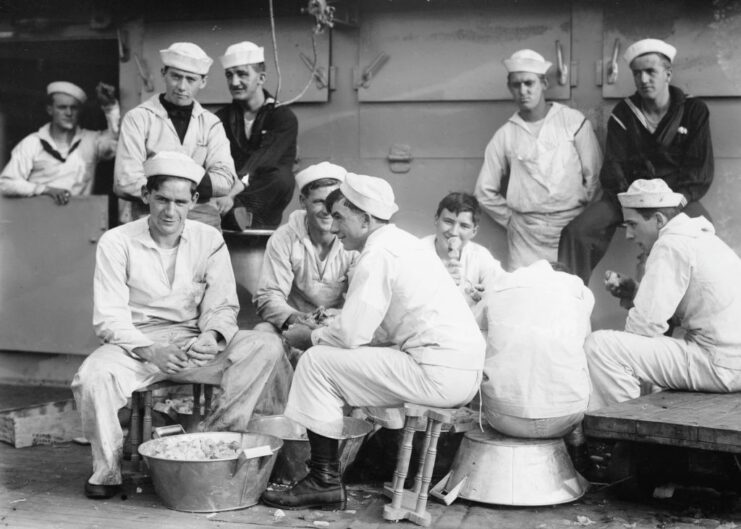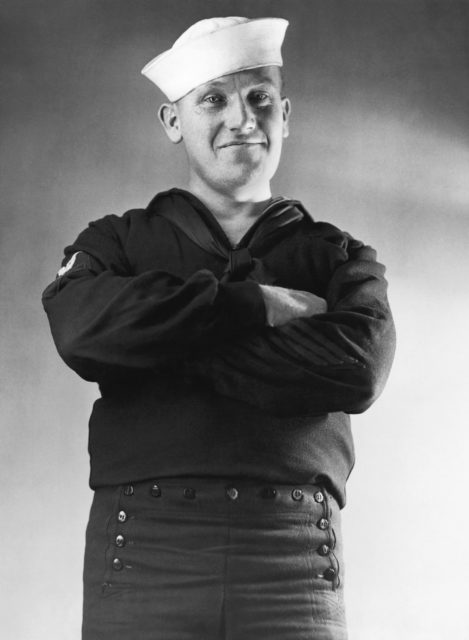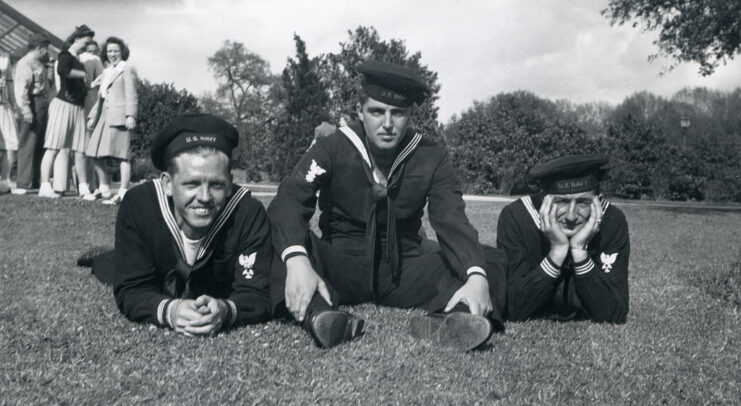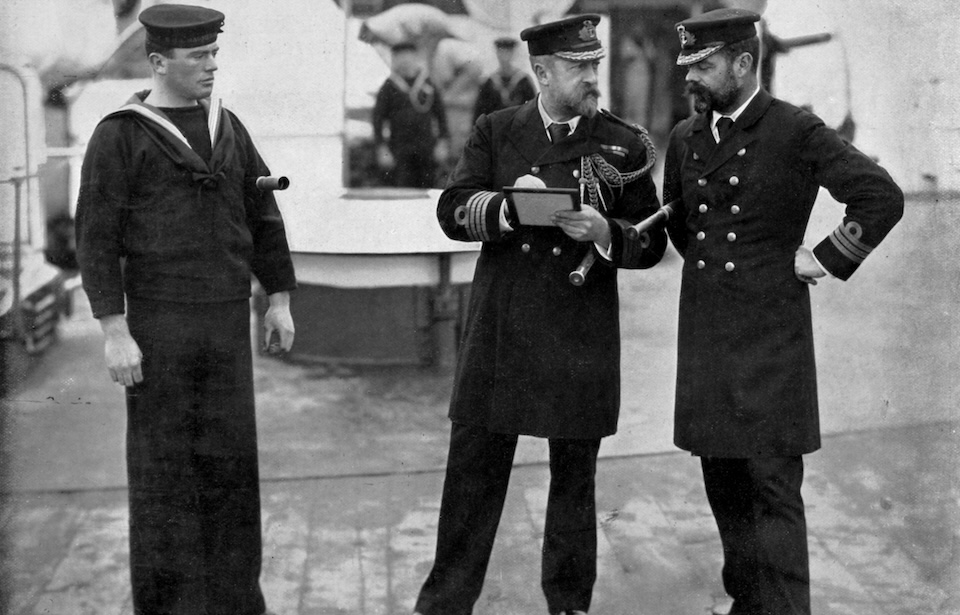Navies worldwide have upheld traditions lasting for centuries, many with origins now lost to history. Yet, one custom stands out with a widely known explanation: the 13-button pants worn by US Navy sailors. Though the design has practical functionality, various theories suggest it carries a deeper meaning.
‘Crackerjacks’

The 13-button bellbottom pants, affectionately known as “Crackerjacks,” were introduced by the US Navy in the early 1800s with practicality in mind. The flared bottoms made it easier to roll them up during hard labor and allowed for quick removal if a sailor fell overboard, without having to remove their footwear.
The pants were made out of thick wool fabric, which got heavy when wet, but also helped prevent sailors from sinking.
There are also theories that the flared design was meant to give US sailors a distinctive appearance. Additionally, since zippers were not yet common, the buttons helped secure the crotch area, known as the “broadfall,” in place.
Why do the pants worn by US Navy sailors have 13 buttons?

The broadfall section of the pants, as previously noted, is fastened by 13 buttons, leading many to assume that this feature was intentionally designed by the US Navy to honor America’s original 13 colonies. However, this is widely considered a sailor’s myth.
The broadfall originally had 15 buttons, which was later reduced to seven to conserve material. Sailors soon voiced their dissatisfaction, finding the smaller section uncomfortable. This discomfort was partly due to weight gain from dietary changes, with some even noting it felt restrictive for their “equipment.”
In response, the US Navy increased the size of the broadfall. With the added material, additional buttons were needed, resulting in six more, creating the 13-button design we see today. This number was likely chosen for a balanced appearance.
What about other pieces of uniform?

Other pieces of the US uniform had their uses, too. The neckerchief could be used as a headband or a cleaning cloth, and it also kept uniforms clean. Sailors in the 19th century typically sported long hair and, to keep it out of their way during tasks, it would be tied in a ponytail and stuck down with a sticky tar-like substance. The neckerchief kept it off the rest of their uniform.
Like the “13 buttons, 13 colonies” explanation for the bellbottom pants, the neckerchief also has an alternative and unlikely origin. Allegedly, the fabric is a symbol to honor Horatio Nelson, with the three white lines representing his three major victories.
More from us: Battle of Trafalgar: The Engagement That Saw the Heroic Death of Vice Adm. Horatio Nelson
Are you a fan of all things ships and submarines? If so, subscribe to our Daily Warships newsletter!
Today, this style of uniform is for dress purposes, rather than actual work, and these unique features were retained to maintain traditions.
